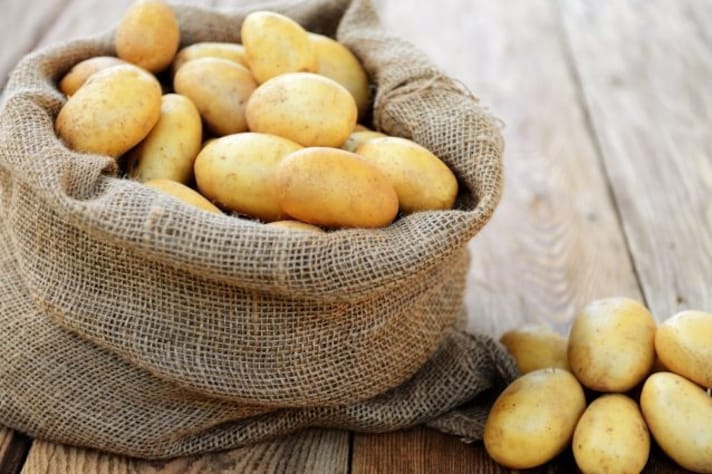
Green potatoes, often found lurking in the depths of our pantry, raise questions about their safety for consumption. But do not fret, all you really need to do is understand the science behind their unusual hue and uncover whether they pose a threat to your health.
What Makes Potatoes Turn Green?

Ever wonder why potatoes go green? It's all about their reaction to light. When exposed to sunlight or even artificial light, potatoes produce chlorophyll, a chemical compound that makes plants green. Along with that, they also produce solanine, a natural toxin that acts as a protective agent for the potato, deterring pests and predators.
But if you let your potatoes bask in the light for too long, they start to turn green themselves. While this greening typically shows up on the skin, it can sometimes seep into the flesh too. Solanine, although natural, can become toxic in high doses. However, it's crucial to note that not all green potatoes are automatically harmful. The key is being able to tell how much greening has occurred and being cautious when you're unsure.
How to Identify Safe vs. Unsafe Green Potatoes
Safe green potatoes exhibit minimal green discoloration, usually limited to the skin or surface areas. Conversely, potatoes with extensive green patches or a bitter taste should be avoided, as they likely contain elevated levels of solanine. When in doubt, err on the side of caution and discard any potatoes that appear excessively green or sprouted.

Consuming excessive amounts of solanine can lead to symptoms such as nausea, vomiting, diarrhea, and headaches. While cases of solanine poisoning are rare, it's essential to be mindful of the potential risks, especially for vulnerable individuals such as children and pregnant women.
5 Precautions Against Solanine Poisoning

To enjoy potatoes safely, it's essential to understand the precautions necessary to minimize the risk of solanine poisoning. From proper storage practices to careful inspection, these simple steps can help ensure that your potato dishes are not only delicious but also safe to eat. Here are 5 vital precautions for safely consuming potatoes:
- Proper Storage: Keep your potatoes in a cool, dark place to prevent them from turning green. A pantry or cellar works well for this purpose, as long as it's away from direct sunlight.
- Regular Inspection: Take the time to check your stored potatoes regularly for any signs of greening. If you spot any extensive green patches, it's best to discard those potatoes to avoid potential toxicity.
- Discard Sprouted Potatoes: Avoid consuming potatoes that have begun to sprout. These sprouts also contain solanine and can increase the risk of toxicity if ingested.
- Store Potatoes Separately: Store potatoes separately from other fruits and vegetables, as they can release ethylene gas, which accelerates ripening and could lead to increased solanine production.
- Proper Handling: Handle potatoes with care to minimize bruising and damage, as injured areas are more prone to developing higher levels of solanine.
Conclusion
While green potatoes may raise concerns about safety, they can be consumed responsibly with proper precautions. By understanding the factors contributing to greening and adopting vigilant storage practices, you can enjoy potatoes safely as part of a balanced diet. Remember, when in doubt, it's better to discard than to risk potential health consequences.
;Resize,width=767;)
